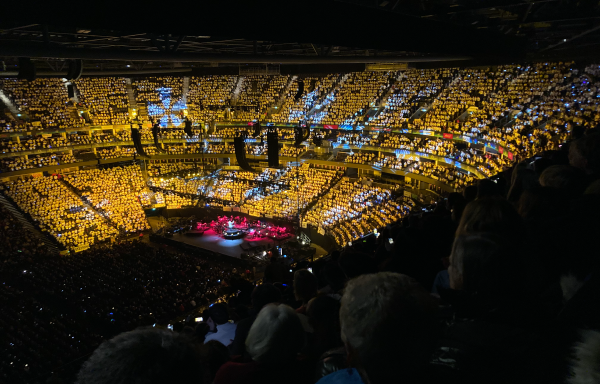Harmonizing potential: Enriching speech, language, and communication through the young voices choir and inclusion strategies for children with SLCN

How much do you know about "Young Voices"? The world's largest school choir group, performing year on year in venues all over the world, has broken 3 Guinness World Records and counting for the largest simultaneous sing-along (293,978 voices altogether) - beating itself to this title across the decades.
4731 schools have registered for Young Voices this year, with thousands of children aged 6-13 years performing at each event. After much deliberation (travelling across London with a small child in tow is no mean feat), I decided to head into the big city to see my daughter perform with her junior school, amongst around 8000 other youngsters. “See” is a slight overstatement. I realised instantly I should’ve brought my binoculars as I daringly leant forward (top section, O2) to try and work out which tiny dot was my child.
Despite my own shortcomings here, I was blown away. An 8000-strong choir is a truly awe-inspiring sight and the support acts shone – the super-cool MC Grammar, super-talented 13-year-old drummer rock star Nandi Bushell and the children’s favourite street dance crew “Urban Strides”.
Young Voices was an experience that my daughter will “never, ever, EVER forget” (her words). It also made me think about the benefit being part of Young Voices might have for children with speech, language and communication needs (SLCN).
Music and singing is valuable for children with SLCN for so many reasons:
- Improving attention and listening skills – Listening to the introduction, pitch and timing are all important skills involved in singing. Children need to pay close attention to cues from others to join in appropriately (e.g. eye contact from the teacher to cue the choir to start).
- Development of grammar and vocabulary - Words and phrases in songs are supported by music, and sometimes gesture too. These cues make it easier to remember and understand the meaning, by providing memorable language models for students with SLCN.
- Narrative development - Songs often contain a story and can increase in length as the verses go on (think of “I know an old woman who swallowed a fly”). This shows students how to structure and expand a narrative.
- Speech and word recognition and clearer production of speech sounds - The rhythm, rhyme and repetition used when hearing, learning and practising songs promote development of phonological awareness skills. Having good phonological awareness enables students to better recognise sounds and words and improves speech sound production.
- Social communication – Singing is enjoyable for many students, and singing in a choir encourages camaraderie and co-operation skills, with some songs requiring turn-taking (especially “call and response” type songs).
Challenges (and tips to reduce their impact)
Of course, there can be some challenges too of being part of Young Voices. Here are some ideas as to how to mitigate them:
- Overwhelm – Many children with communication needs have sensory difficulties, related to their SLCN and/or associated with another condition (e.g. Autism). Needless to say, a large venue such as the O2 filled with so many people can lead to sensory overstimulation. Providing the child with support tools can be useful. For example, ear defenders can relieve stress and anxiety and support self-regulation by reducing noise and sensory overload. It is worth them being trialled first, so that children can become familiar with them and see if they find them useful at all.
- Following instructions - this will be difficult for many children with language difficulties, but in a huge venue, being able to listen to instructions above all the noise can place extra demands on an already heavily loaded processing system. It could be worth teaching gestures or signs to all your pupils attending. For example, wait (hands facing outwards, pushing forwards twice), toilet (rubbing two fingers on your shoulder) could be very useful for the children to learn to communicate effectively. For children with communication aids, please ensure that they have these with them!
- Lyrics – It may be difficult to recall the lyrics; there are so many songs to remember! Verbal recall is very difficult for many children with language needs. Using gestures and signs, or even pictures, would be useful for recall during practice and the performance itself.
- Accessibility - Young Voices is committed to making their activities as accessible as possible. You can register any special needs with Young Voices and can talk to them about particular SEND arrangements for your pupils. There is a BSL-interpreted performance in every city. Please see their website for a useful guide: https://www.youngvoices.co.uk/accessibility-at-young-voices
Summary
Attending such a large event can support children with SLCN to generalise their skills in a large setting. Whilst each child is different - some children love singing and some children hate it - participation in Young Voices should be judged on a pupil-by-pupil basis. For some, it can promote resilience skills and enable them to use their emotional regulation techniques to their fullest. And importantly, they will have something amazing to discuss with their classmates, friends and families for years to come!
For more information about Young Voices and how to sign up, look here: https://www.youngvoices.co.uk
Did your pupils with SLCN attend Young Voices this year? If so, we would love to hear from you. Please contact claire.chambers@speechlink.co.uk and tell us how it went!